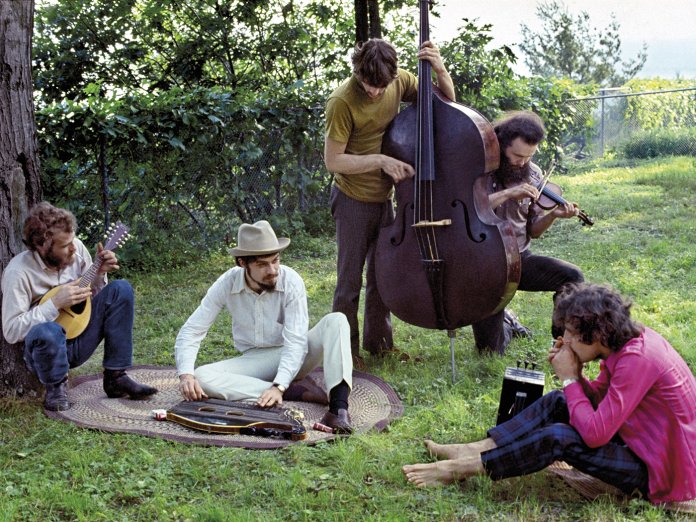In the May 2023 issue of Uncut – in shops now – you can see some exclusive, unseen Elliott Landy photos of The Band from across his various sessions with the group as they fashioned their unique and influential sound up in Woodstock at the tail-end of the 1960s. The pictures are taken from Landy...
In the May 2023 issue of Uncut – in shops now – you can see some exclusive, unseen Elliott Landy photos of The Band from across his various sessions with the group as they fashioned their unique and influential sound up in Woodstock at the tail-end of the 1960s. The pictures are taken from Landy’s forthcoming second volume of The Band Photographs 1968-69; you can sign up for the Kickstarter campaign or pre-order the book here.
You’ll have to buy the magazine to see all the pictures, but here’s a longer version of our interview with Elliott about the new book.
- Peter Gabriel is on the cover of the latest issue of Uncut
Was there a particular discovery that prompted you to put together a second volume of Band photographs?
One day I was looking through the boxes of seconds from the selections we made for the first book, and I saw so many pictures in there that I couldn’t believe were not in the first book, because they were so fabulous. They were some of my favorite photographs. I said, ‘Wow, why didn’t we use this one, or this one?’ Of course the reason was that we had 160 pages, and I like full-page photographs. So we didn’t really have room for as many photographs in the first book as deserved to be in there.
Did you meet The Band for the first time at Big Pink?
Actually the first session was when I went up to Canada to photograph their families. They wanted to include a picture of their relatives in the [Music From Big Pink] album, as a way of saying thank you for helping us our whole lives. And then a few weeks after that, I went up to the house they called Big Pink, which was in West Saugerties, New York, in the area of Woodstock – just down the road from where I live now, by chance. There’s some great pictures in that first shoot, but they didn’t see one that they felt was a cover, so I went back a second time, [by which point] they were no longer in Big Pink. I guess they got their advance from the record label and instead of living in one house, they got two larger places.
…Which is where the photos of the group playing instruments out on the lawn come from, right?
They’re in the garden outside a house that Garth [Hudson] and Richard [Manuel] rented on Ohayo Mountain Road, which is one of the mountains that surround Woodstock. It was quite a beautiful home that overlooked a big reservoir, and they just got musical instruments and went outside and started playing and fooling around. There’s a number of really good pictures from that sequence that I plan to put in the new book. They weren’t seriously creating music there, so they were improvising as far as I know. Garth was not a violinist, of course. I imagine he must have played violin somewhere on some of the tracks, but that wasn’t his job with the group. So they were really fooling around and just making for interesting photographs. They were improvising both visually and musically.
Would you say that one of the reasons these photos are so evocative is that they’re taken in the same environment that the music was made?
I guess I’d have to agree with that. When I photograph, basically I don’t set things up, unless I have to. In general, I take my cue from what’s happening. I start with where people live and take pictures in that environment. And I don’t tell them how to pose, how to dress or what to do. I just walk in with my camera and there you are. In those years there were no stylists, no wardrobe people, nobody figuring out what it should look like or what effect we want. It was something that was completely open. When I met the guys in the band, we didn’t have a clue as to what we were going to do; it just evolved over the four photo sessions I did with them.
What struck you most about spending time with The Band in those early days?
I saw that they were rooted to the past – not in the past, but connected to the past. They were not your usual kind of hippie musicians of those years. They were old-fashioned, in a way. One good example is that when we would meet someone in the street, let’s say the clerk from the local grocery store, they stopped to say hello to this person as if he was the president of a record label. They paid normal regular people the same kind of respect that they would to someone that could be influential for their careers, which is how I think it was in the old days. You said, ‘Good day, how are you?’ and there was a lot of politeness. All of them were brought up in rural situations and they had that older-type cultural politeness. They were just genuine human beings, really nice people, and everyone in town liked them. They didn’t feel they were better than other people, they felt they were the same.



